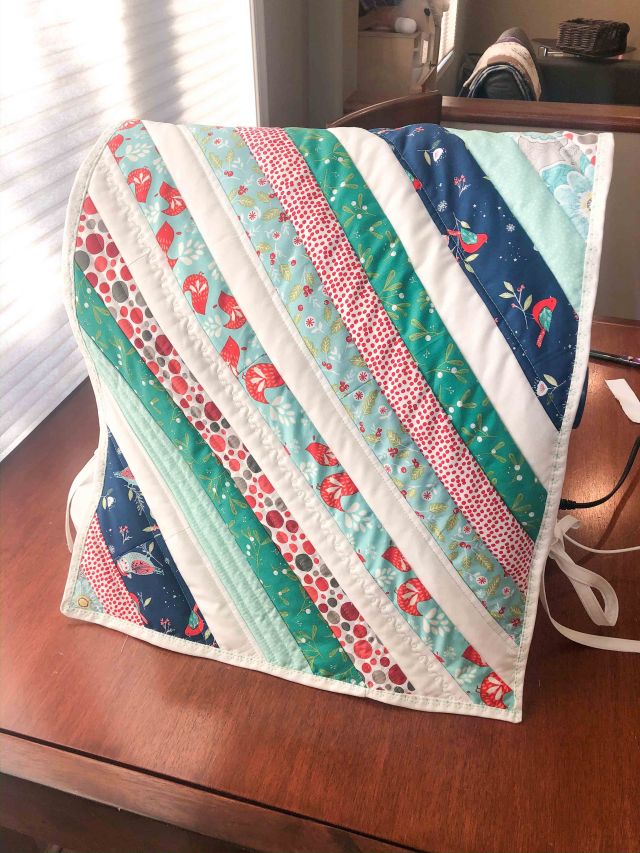
Swim suit cover-ups might be a little more popular than sewing machine cover-ups for this time of the year, but I recently moved some things around on the main floor where I do most of my sewing (that’s what happens when you work from home for three months and have a chance to really absorb your surroundings!) and thought a little cover for my Janome Skyline S9 would be the perfect little finish to it’s new resting spot.
I do have a dedicated sewing room on the second floor but life happens on the main floor and if I want to sneak in a bit of sewing here and there – I need to be able to watch all the action.
There are many patterns out there for sewing machine covers. My Janome Skyline S9 has a spool stand on it, making the top a bit unique for most standard covers. So I just decided to wing it! I measured the width of my machine along with the height on both sides, including an allowance for the cover to go over the top, and decided on a cover that was 18 inches x 44 inches.
This is a fabulous scrap buster project! Which is great as I’m also trying to clean up my sewing room a bit right now.
Using the quilt-as-you-go method, I started with my quilt sandwich – batting and backing fabric pinned together.
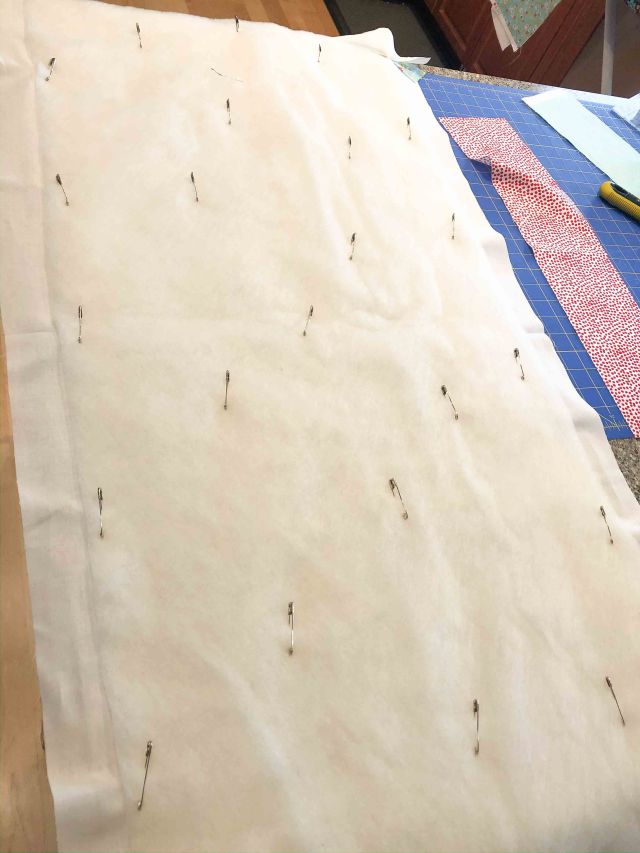
Once you have that in place, you can start piecing together your top.
I generally used strips of fabric that were cut to 2 inches wide. Although the blue fabric with the birds was cut at 3-inch widths because I didn’t want to chop off the birds!
The strips need to be long enough for the sections you are working on – which varies from end to end. And if you don’t have a piece long though, you can stitch two pieces together to create longer strips.
Starting in one corner, I placed my strips right-sides together, diagonally, and secured with a 1/4 inch straight stitch.
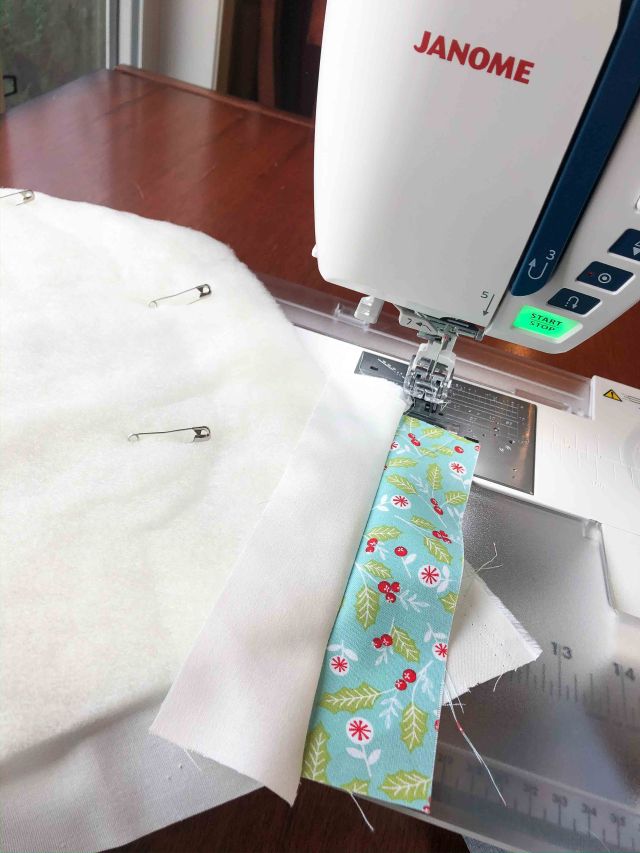
Press your top piece open, right side up, and continue down your rows placing the next strip on the second strip of fabric, right sides together again, and secure with a 1/4 inch seam allowance. Press the fabric you just stitched, open, right side up, and repeat the process.

You can start on either side of your project and manage your quilt sandwich however it best works to fit through the arm of your machine. I started working right first from the right to the left but once I got half way through, I turned my fabric around and worked left to right – although large workspace on the Janome S9 means it’s pretty easy to work with a larger amount of fabric, regardless.
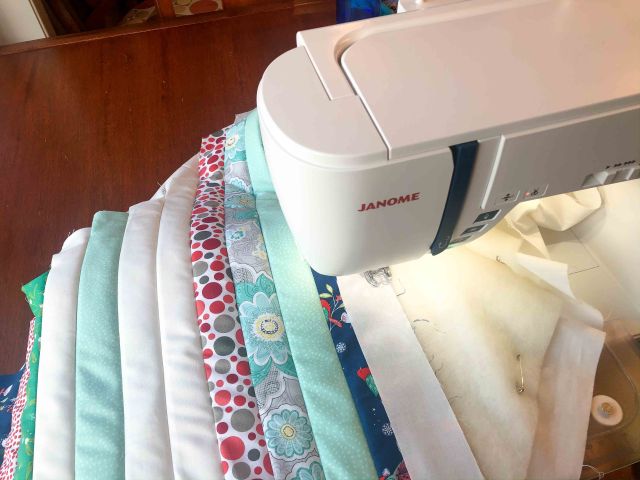
Once I completed the top, I then squared up my fabric back to the original dimensions of 18 x 44.
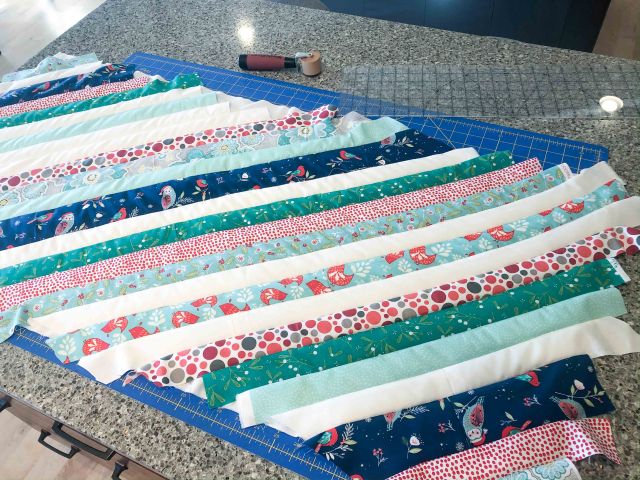
I find folding it in half makes it easier to ensure both sides have true 90 degree corners (and match).
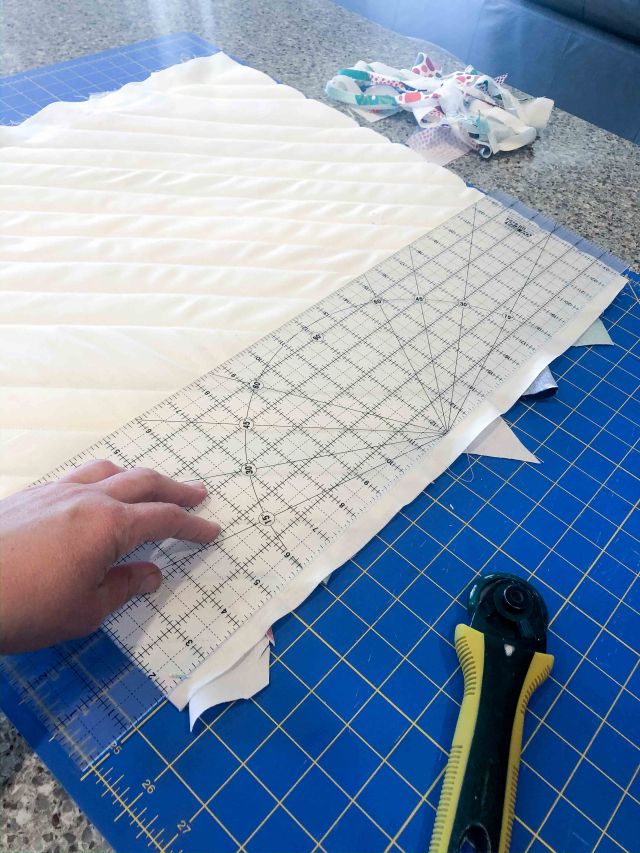
Loving these blues and teal-y greens with the pop of red.
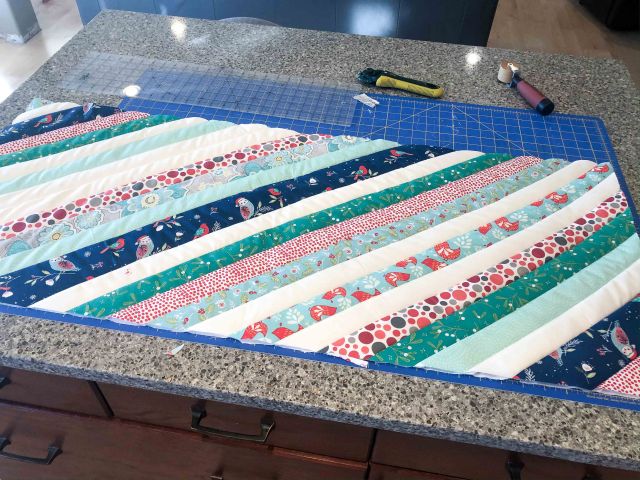
The quilt-as-you-go method means you don’t have to go back and stitch in the ditch to finish off your top. But I still wanted to add a bit of texture to my sewing machine cover-up.
With 300 built-in stitches on this machine, I had a lot of options to choose from!
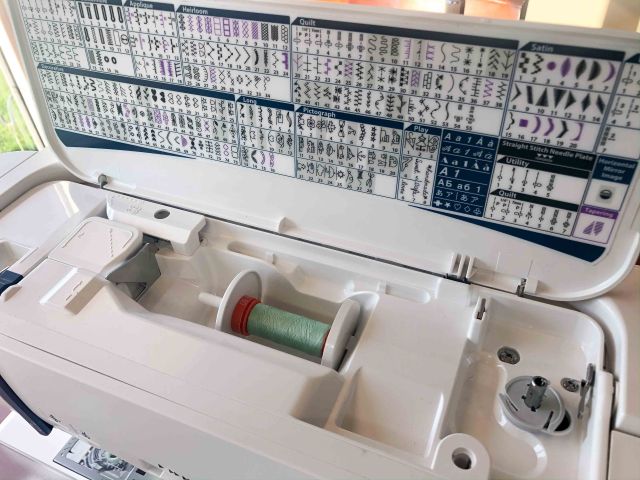
I love the simplicity of a straight stitch. When I use this for quilting, I like to lengthen the stitch length to give it more impact. I increased the stitch length to 3.5 for my quilting stitches, as seen on the bottom of the Janome Skyline S9 panel in the adjust menu.

This makes my stitches stand out a little more and adds to the texture – one of my favourite parts of quilting!
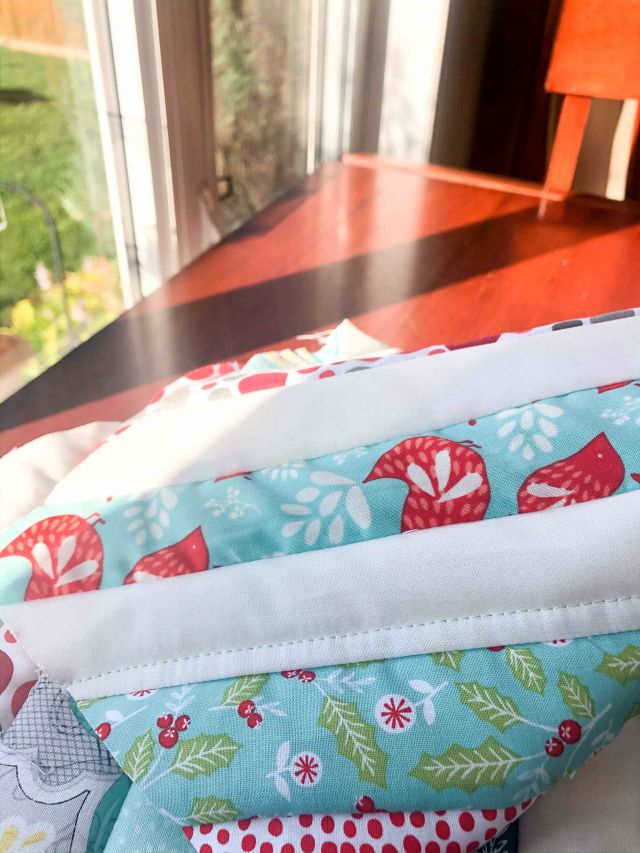
And I also added a bunch of decorative quilting stitches, including this wavy, curvy, whirly stitch.
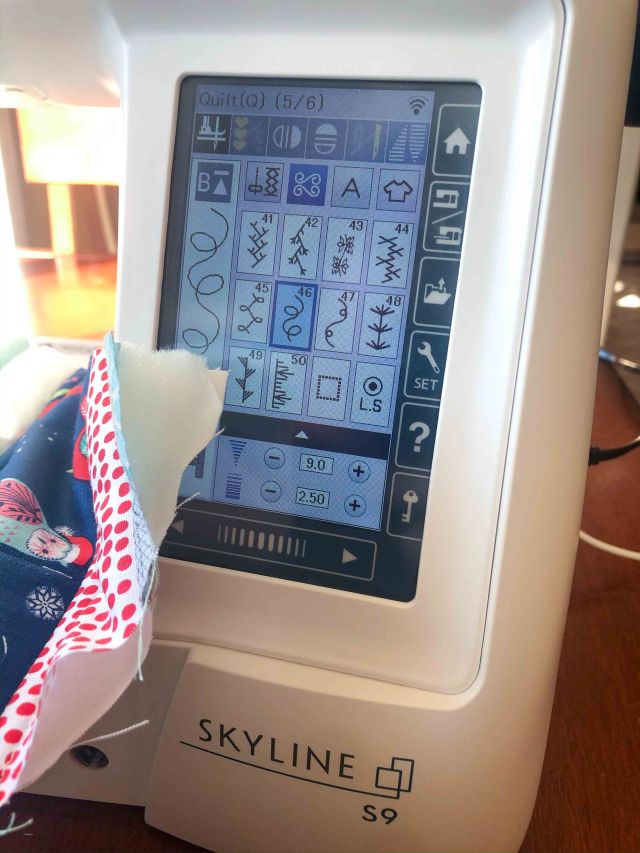
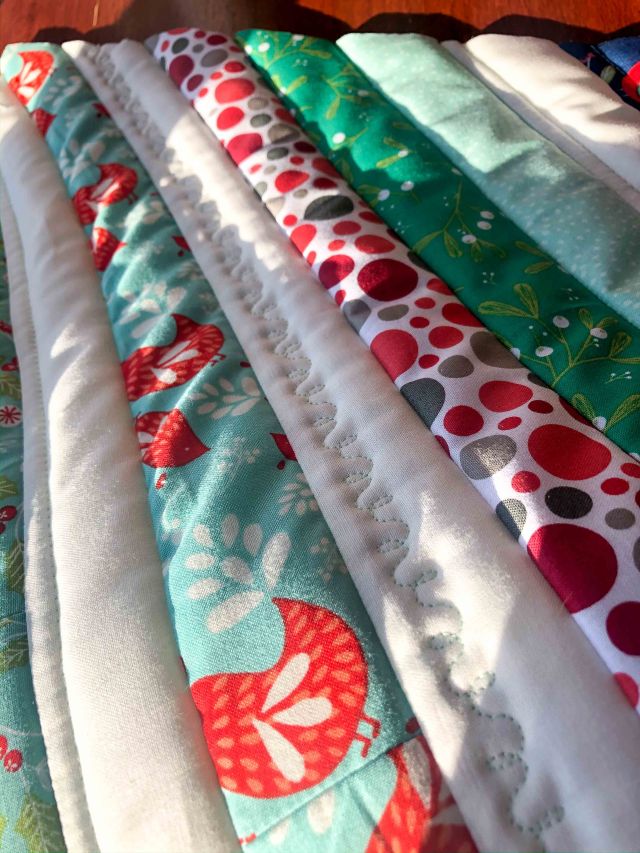
Finally it was time to add my cover-up ties. I made these by cutting a 2 inch strip of fabric, folding it in half lengthwise, opening it up, and folding each side to the middle, pressing and then top stitching. You don’t necessarily need to top stitch each side but I loved the soft teal/green on this white fabric.
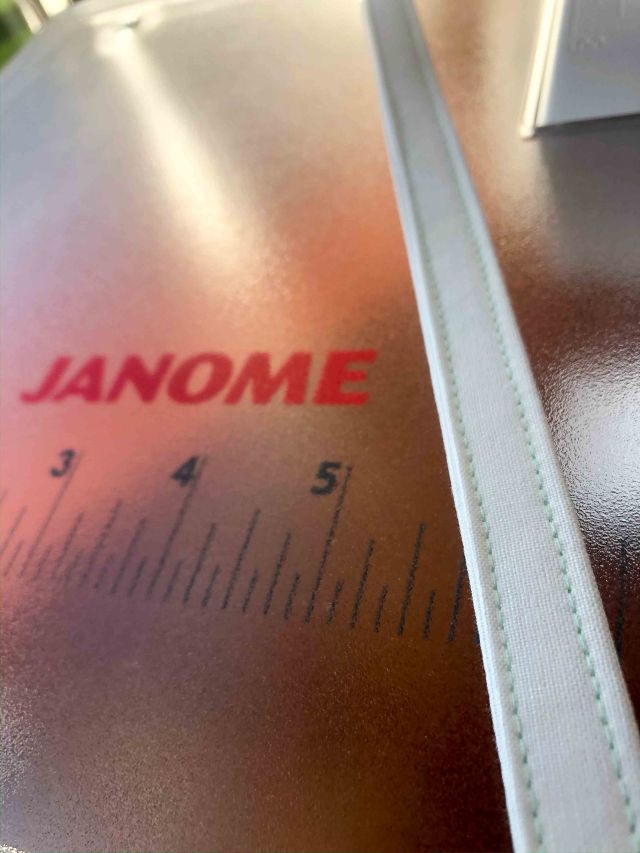
The ties were secured along with the binding.
I used the Acufeed Flex Dual Feed Foot for this project. The fabric and batting ended up a bit bulky (I was using some scrap wool batting I had on hand and it’s a bit fluffy). This foot just helps ensure everything – top fabric, middle and bottom, all move together.
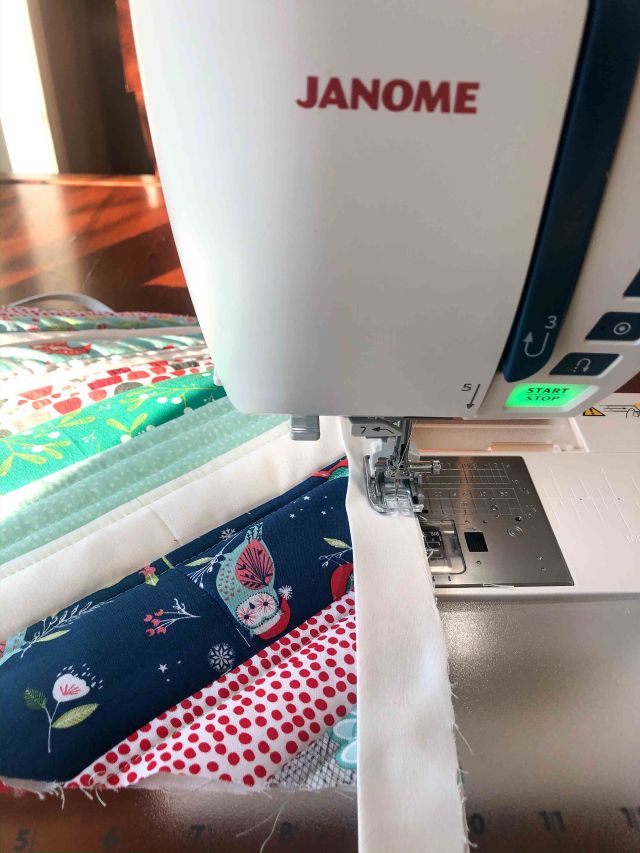
Not only is a sewing machine cover something that you can change with the seasons or use to just freshen up a room, it is also a marvellous little dust cover for your treasured sewing machine.
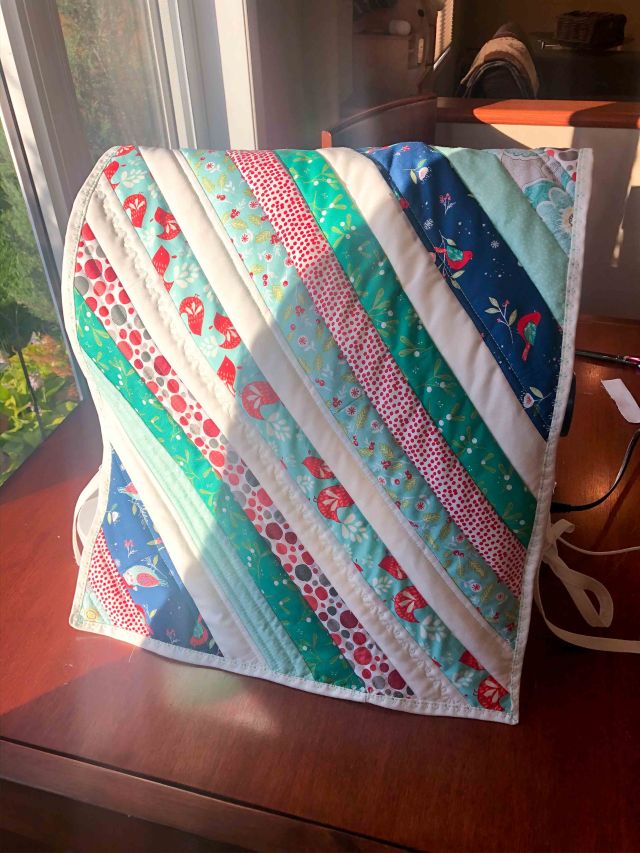
They can also be very practical pieces with the addition of a few pockets for added organization.

I just love how bright and cheery this one makes me feel!

Have you sewn a cover for your sewing machine?
What summer sewing projects are you working on right now?


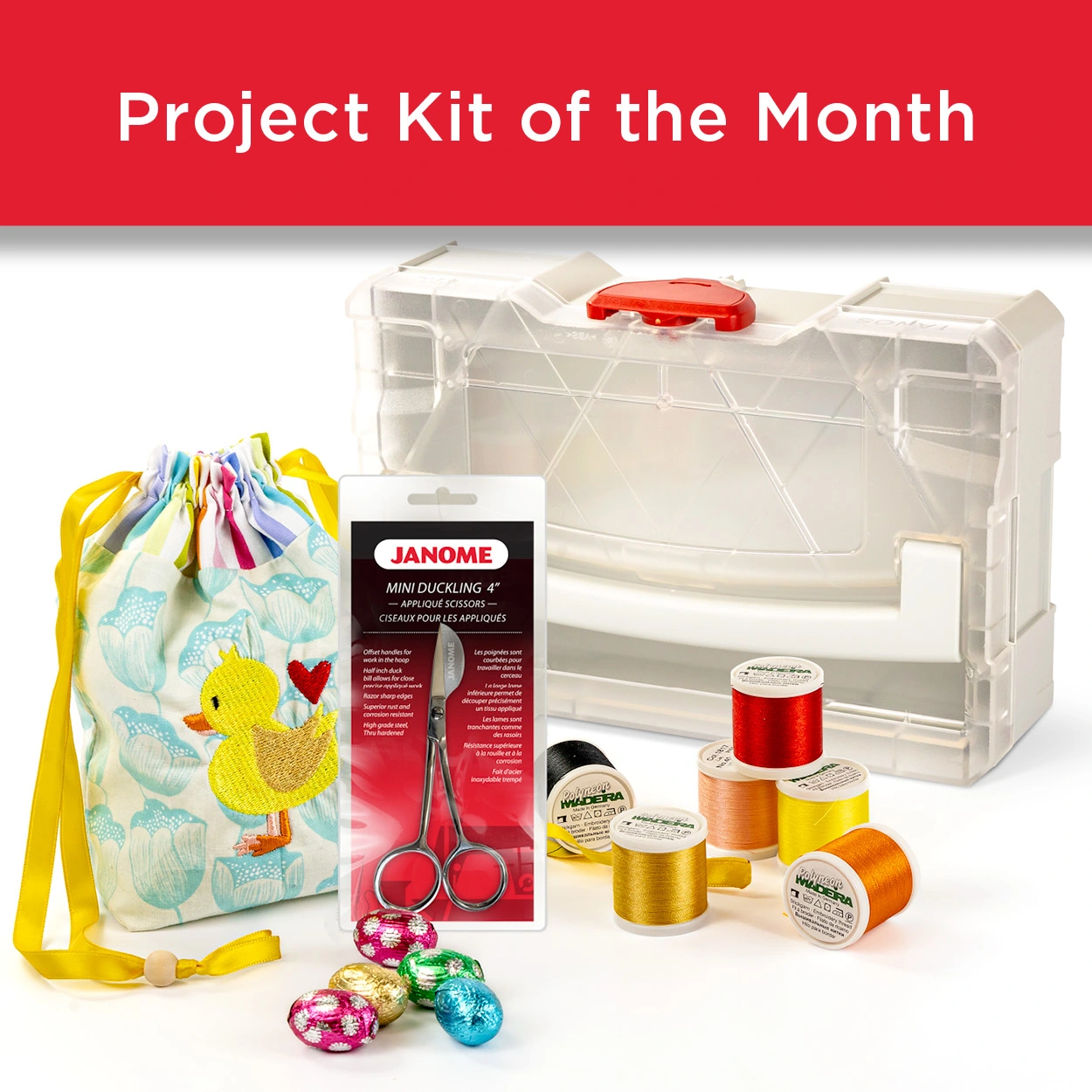





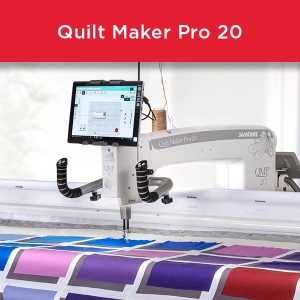

Great idea for your machine, I think I will do as you did as I have the thread attachment as well for my 9450, my next project, maybe use some of my crumb blocks, maybe. Thanks for sharing
LikeLike
Hi Doreen,
Glad you liked Trina’s project. Happy sewing!
Liz
JANOME CANADA
LikeLike